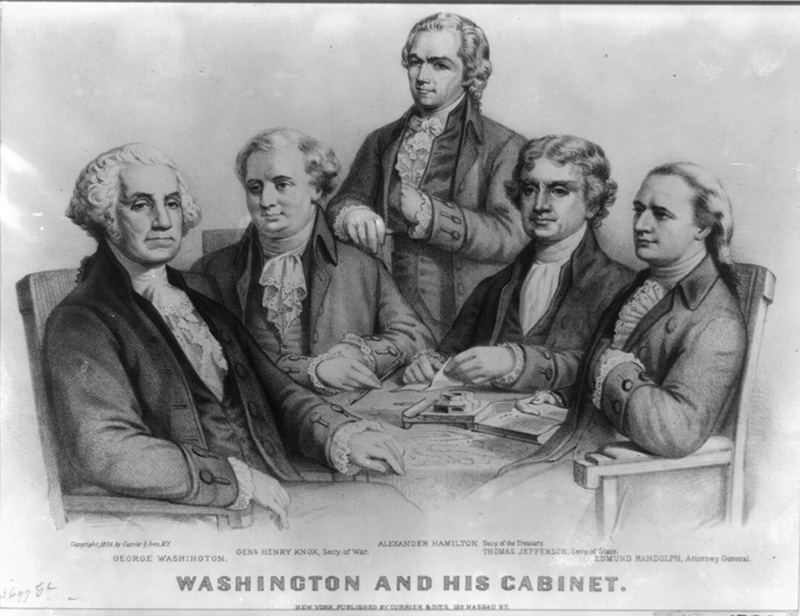![120716_01P_FS Francis Bicknell Carpenter (American painter, 1830-1900), First Reading of the Emancipation Proclamation by President Lincoln, 1864, oil on canvas, 108 inches (274.3 cm) x 180 inches (457.2 cm), located in the U.S. Capitol Building over the west staircase in the Senate wing. Carol Highsmith, photographer. Photographed: [between 1980 and 2006]. 1 color transparency; 4 x 5 in. or smaller.](https://mhebtw.mheducation.com/wp-content/uploads/2016/12/120716_01P_FS-678x381.jpg)
Part of the executive branch, the cabinet is made up of the president’s most private, trusted advisers. All members are chosen by the president and confirmed by the Senate. Their role is to advise the president on any national or international issues. In fact, the cabinet is so crucial to the functioning of our government that the Secret Service rarely allows all cabinet members to be together in one place at one time.
The cabinet was established in Article II, Section 2 of the U.S. Constitution, though the number of members it includes isn’t mandated by the Constitution or by any established law. The current cabinet includes the vice president and the heads of fifteen executive departments. There are also seven other cabinet-level officers, including the chief of staff and the Director of the Environmental Protection Agency (EPA). However, the cabinet has changed quite a bit over time.
The First Cabinet
George Washington’s cabinet included just four original members: the Secretary of State, the Secretary of the Treasury, the Secretary of War, and the Attorney General (head of the Justice Department). Washington sent his first cabinet nomination–Secretary of the Treasury Alexander Hamilton–to the Senate for approval on September 11, 1789. Hamilton was approved just hours later. The term “presidential cabinet” was coined by James Madison, who used it to describe Washington’s first meetings with his top advisers.

Presidential Impact
Over time, the size of the cabinet grew slowly but steadily. However, some presidents have had a greater impact on the structure and makeup of the cabinet than others.

In July 1979, in the wake of the Vietnam War and Watergate scandal, and facing an energy crisis and a citizenry largely disillusioned about their government, President Jimmy Carter gave an address that came to be known as the “malaise speech.” Shortly afterward, in the space of four days, Carter demanded the resignation of 34 top cabinet members and staff aides: his entire cabinet. Carter then filled the vacancies with people who had traditionally clashed with the White House in the past. Though his purpose was to show that he was effecting real change in Washington, Carter’s cabinet purge actually left people concerned about instability and upheaval in their government.
Two decades later, after the terrorist attacks of September 11, 2001, President George W. Bush formed the Department of Homeland Security: the biggest governmental reorganization in more than fifty years. The DHS established the National Terrorism Advisory System, whose job it is to provide information about terrorist threats and to recommend security measures to the public.
With his current cabinet choices so far, Donald Trump stands to preside over the wealthiest cabinet in American history, leading many to wonder how they will fulfill Trump’s campaign promises to represent and rebuild the American middle class.
